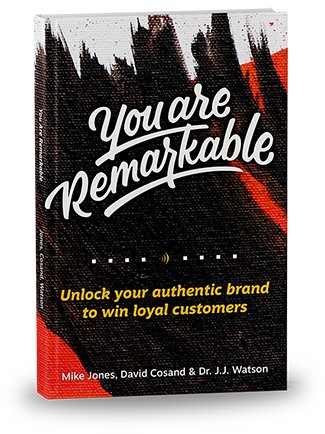
*scroll*
“The 2017 bob-length haircut… Six ways to make a mason jar salad….23 Words or Phrases to Eliminate from Your Marketing Today… Wait, words to eliminate? I’ll bet I use more than half of these…unless it’s all buzzwords. I’d better make sure.”
*click*
Well, one thing’s for sure…Pinterest knows me too well.
Also, Global English Editing advises cutting out a few words and phrases to make writing more concise, direct, and persuasive. Being the word junkie that I am, I wanted to see if they had indeed achieved the holy grail of copywriting.
The infographic is linked above if you want to take a look, but I’ll summarize their recommended words to shed:
- “Very, basically, totally, essentially, and really” – nondescript
- “Then” – nondescript
- “Each and every” – redundant
- “Adverbs in general” – opt for a descriptive verb
- “Firstly, secondly, and thirdly” – opt for first, second, and third
- “Just” – unnecessary
- “That” – unnecessary
- “As a matter of fact” – unnecessary
- “Past history/past experience” – redundant
- “As to whether/whether or not” – single words “whether” and “if” are sufficient
- “For all intents and purposes” – fluff
- “Due to the fact” – unnecessary
- “Frequently” – opt for a precise term (e.g. “monthly”)
- “In terms of” – unnecessary
- “Personal opinion” – redundant
- “In the process of” – unnecessary
- “With the possible exception of” – wordy
- “The month of [July]” – name the month/day
- “Quite” – unnecessary
- “Many” – vague
- “During the course of” – redundant
- “All of” – unnecessary
- “Perhaps/maybe” – weakens writing
Let me start off by saying that I understand what they’re trying to do: All writing should be meaningful and purposeful. Believe me, I spend hours agonizing over word choice too.
That’s why I have to disagree with this premise in general, and many of the points specifically.
This infographic is perfect for reporters and news writers. When your job is to present the facts in the most direct and intelligent way possible, you’ll want to shed all fluff and choose words that are rich in meaning and need no further elaboration.
But marketing is different. Let’s zoom way out and I’ll explain.
Why Words?
Why do we write? Really, I’m asking.
Is it for SEO on our websites? Is it because we humans hate whitespace? Is it because the cavemen had an excess of charcoal and too many blank cave walls?
What is the purpose of writing?
I would submit that it’s because humans have thoughts and experiences that cannot be shared in person. Think about it: why would you send a text to someone who’s sitting right across from you on a date?
For centuries, humans have communicated across space and time by writing to each other – communicating concepts and history that would have never been possible face-to-face. Can you imagine Shakespeare verbally transferring MacBeth to a new generation? …Nightmare. Writing allows our thoughts and ideas to reach a much wider audience than a single conversation.
Enter the Digital Age. Websites, emails, social media, blogs, ebooks….we’re flooded with words on the internet – especially in marketing. People are constantly trying to “hack” conversions with the right copy or the right presentation. Use this word…don’t say that…blah blah blah. But you know what they’re forgetting?
Words are used to communicate with another person in your absence. Websites are your ambassadors to potential clients, and believe me, your audience is making judgements about you based on the words they read.
What’s Your Brand’s Personality?
Before you ask, yes. Yes, companies have unique personalities. Why? Because they’re made of people and people do business with them.
The internet is not an excuse to ditch all semblance of human interaction – and herein lies the rub:
The words you choose on your website should be solely derived from your brand’s personality.
That’s why I cannot agree with most of these writing cuts – humans use these words in conversation! They might be rolled into the brand personality! The type of writing that the infographic is trying to achieve is direct, confident, bold, and highly-educated. That’s great…if your brand is direct, confident, bold, and highly-educated.
But, guess what? If we all had that personality, the world would get really boring really fast. Different personalities are the spice of life – they make interaction interesting. Brands are no different.
I’ll give some concrete examples.
If you followed this concept, you would be banned from using phrases like, “Firstly”, “As a matter of fact”, and “In terms of.” But what if you work in data management and your brand is a brilliant, (slightly) nutty professor like Emmet Brown from Back to the Future? You would absolutely use those words and phrases!

Again, they have you dropping phrases like “just”, and “in my opinion”. But, what if you’re a beauty blogger with a “best girlfriend/fashionista” brand? Your brand is built on opinion and trust! It’s also more casual in language.
“Let’s just chill out, ok?”
“Haters gonna hate, but in my opinion, these heels are here to stay.”

Why don’t we cut these “fluffy” phrases out? Because they add character. You can almost hear the brand voice in your head.
One more: don’t say stuff like, “Each and every”, and “Maybe/Perhaps”? Ok, what if your brand is the Julie Andrews of financial planning?

You could (and should) absolutely say, “We are very fond of each and every one of you.” or, “When you’re feeling overwhelmed, perhaps a little extra support is all you need.”
Verbal Guidelines
Bottom line: you can write whatever you want…as long as you write intentionally and thoughtfully. It’s not the words and phrases you use that make your content unbearable or engaging, but throwing words on a page with no thought to your brand (or your message) will invariably murder your copy.
With your brand personality in mind, there are absolutely things you should and should not say when you write. But these should be perfectly tailored to your brand.
There’s no universal standard of marketing copy, just like there’s no universal standard to proper conversation.
That’s why time at Resound is spent creating verbal guidelines for our clients. These documents make sense of the brand personality with word choices and recommended sentence structures, helping all creators for the brand stay on the same page (pun absolutely intended) with the brand’s conversations.
If you’re looking for verbal guidelines, hit me up. Also, if you are rewriting content on your website, here’s a recent post from Resound on some actual potholes to avoid: 9 Web Content Don’ts for 2017.



